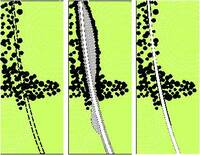- England
- Scotland
- France
- Holland
- Germany
- Italy
- Spain
- Portugal
- USA
- China
- Japan
- India
- Iran
- Advice
- Gardens
- England
- Scotland
- France
- Holland
- Germany
- Italy
- Spain
- Portugal
- USA
- China
- Japan
- India
- Iran
- Advice
- Garden Tours
Book: Landscape Planning and Environmental Impact Design: from EIA to EID
Chapter: Chapter 10 Sustainable green transport
Road design must relate to its context, as must the design of buildings and other prominent structures. One can see clear differences between roads designed in Ireland, Italy, and America but within each country new roads are standard products, like electricity sockets. This approach derives from our technocratic overlords and is totally misconceived. Roads should be designed in relation to contexts. Take the example of a long distance highway which is being built through a varied landscape. The engineer's first step will be to establish "design criteria" for the horizontal and vertical curves, probably in a published manual. A standard bridge design may follow. Bank profiles will be defined for earth slopes. A topsoiling specification will be agreed with the horticultural specialist. Standard details will be worked out for kerbs, fencing, drainage, crash barriers, lighting, retaining walls and all other details. Hardly any of this standardisation is necessary and most of it is thoroughly undesirable. The road may pass through: - limestone hills with thin soil and a drystone wall vernacular - a clay vale with rich soils and a tradition of oak paling and sandstone walls - a sandy plain with scrub vegetation and unfenced roads To anyone who has not been taught otherwise, it is obvious that the detailing of the road should vary according to the patterns of the existing landscape [Fig 10.9]. 10.9 The detailing of roadside land should relate to the patterns of the existing landscape - not the drawings in a road-engineers manual. Left, road alignment; Centre, engineered road; Left, contextualised road

